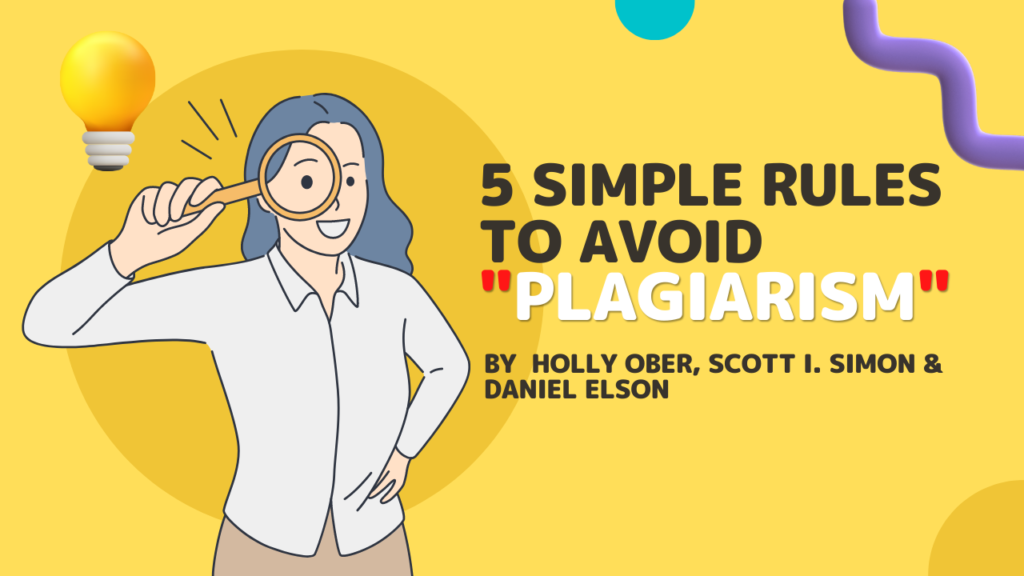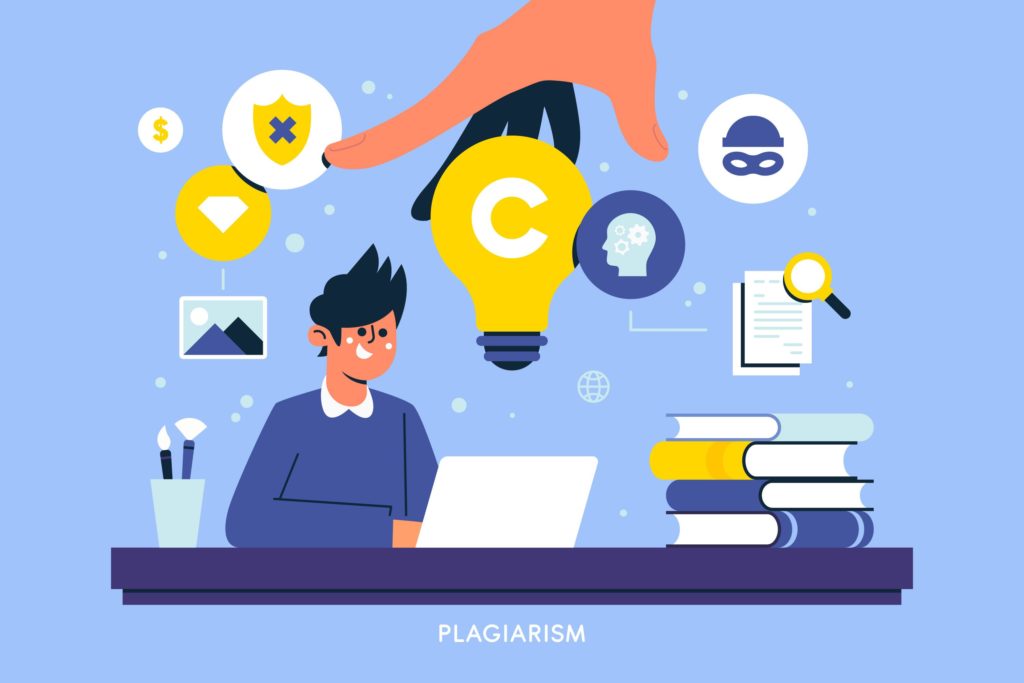
Plagiarism is “the process or practice of using another person’s ideas or work and pretending that it is your own”, the meaning from Cambridge Dictionary. There are Five Simple Rules to Avoid Plagiarism that were written by Holly Ober, Scott I. Simon and Daniel Elson. They described the five rules to avoid plagiarism that were interesting as follows:
1) Don’t copy. Mimicking verbatim words from any other paper or book (even if it’s your own previously published work) is not good writing. Very short quotations are acceptable when contained within quotation marks and citing the source immediately following the quote. It should go without saying that copying without quotation marks and lacking appropriate citations is blatant plagiarism, but unfortunately, this does occur.
2) Write in your own words. Write out all your own ideas without using someone else’s words or even another’s writing style to help you out. This means that you should generally avoid paraphrasing as much as possible. Paraphrasing, or rewriting someone else’s text in your own words, is acceptable only if it occurs minimally in the text [e.g., a paragraph] and the original source is cited at the end of the paraphrased passage. The easiest way to avoid any concerns about plagiarism here is to not paraphrase. Use your own, original “voice” to convey your ideas. Do not blend original and borrowed text without citing the borrowed text.
3) When in doubt, cite. If you find yourself citing excessively because of this, it could be an indication that you’re not writing enough in your own words. This is a sign you should consider rewriting your paper. Common words and phrases do not need to be cited or put into quotation marks, but any discussion of commonly understood concepts must be properly cited.
4) Don’t recycle images, figures, tables or text from one of your own previously published papers without citing. In general, it’s better to not republish a figure that you’ve published before. But if you must, cite the original paper in the figure or table caption and make sure you mention in the text that it was from your earlier publication and obtain permission if you have not retained the copyrights. Do not recycle text from one paper to the next. Write new text for each paper. If you fail to do these things, you will be committing self-plagiarism, which, although often unintentional, is treated the same as willful plagiarism.
5) Ask permission. If you want to use a figure, table, or any kind of data that has not been published before, and has been created or gathered by someone who is not a co-author of your paper, you absolutely must ask their permission and attribute it to them. The same applies if you make your own figure or table using their data. Seek copyright permission for every published figure, table or illustration you intend to republish.
The five simple rules for avoiding plagiarism is the helpful guideline for beginning authors. Also, they can help to remind any authors when they have writing works. The plagiarism is the important process that authors must aware and avoid which we expect these rules for avoiding plagiarism will help you to have excellent writing.

